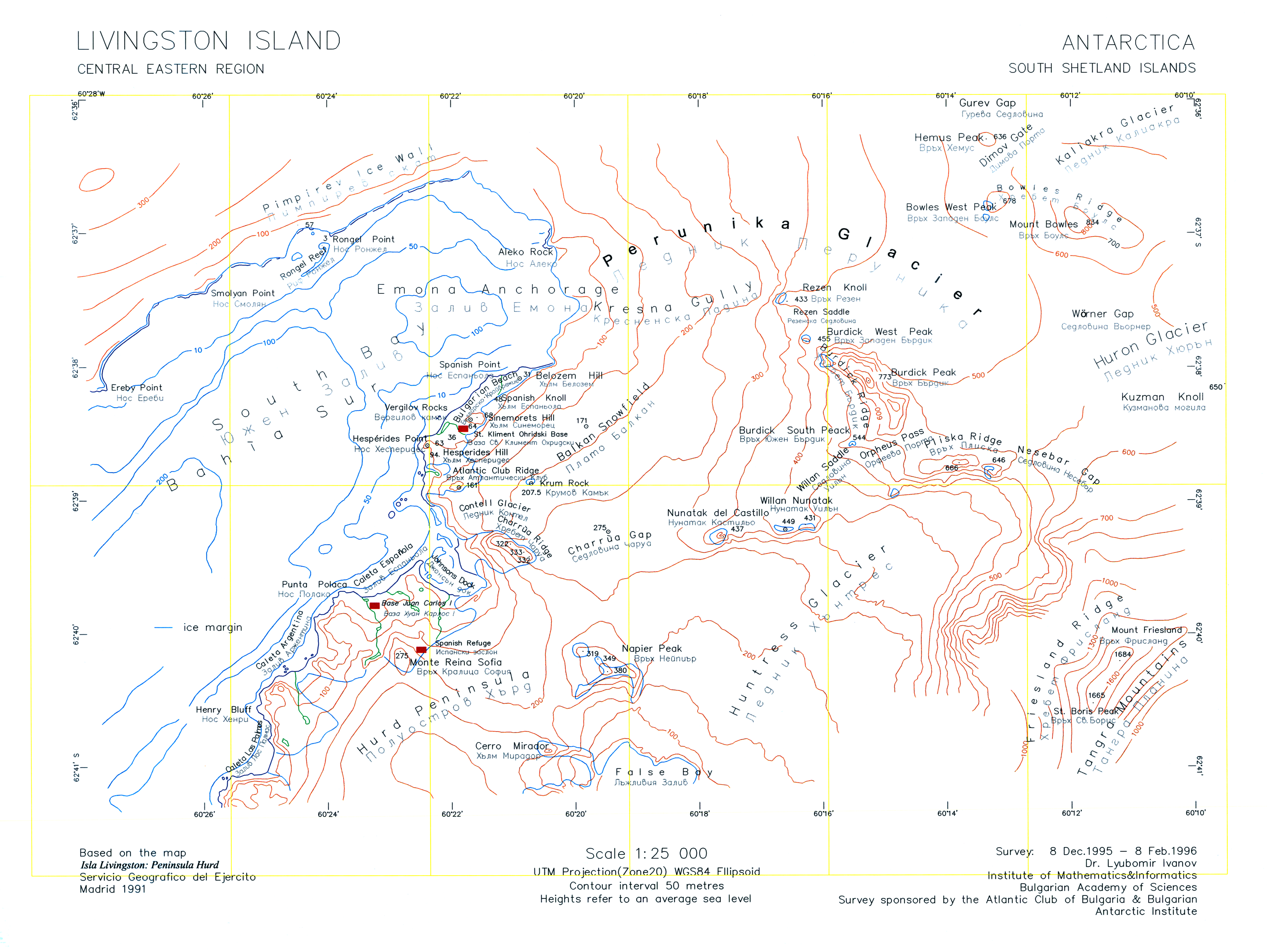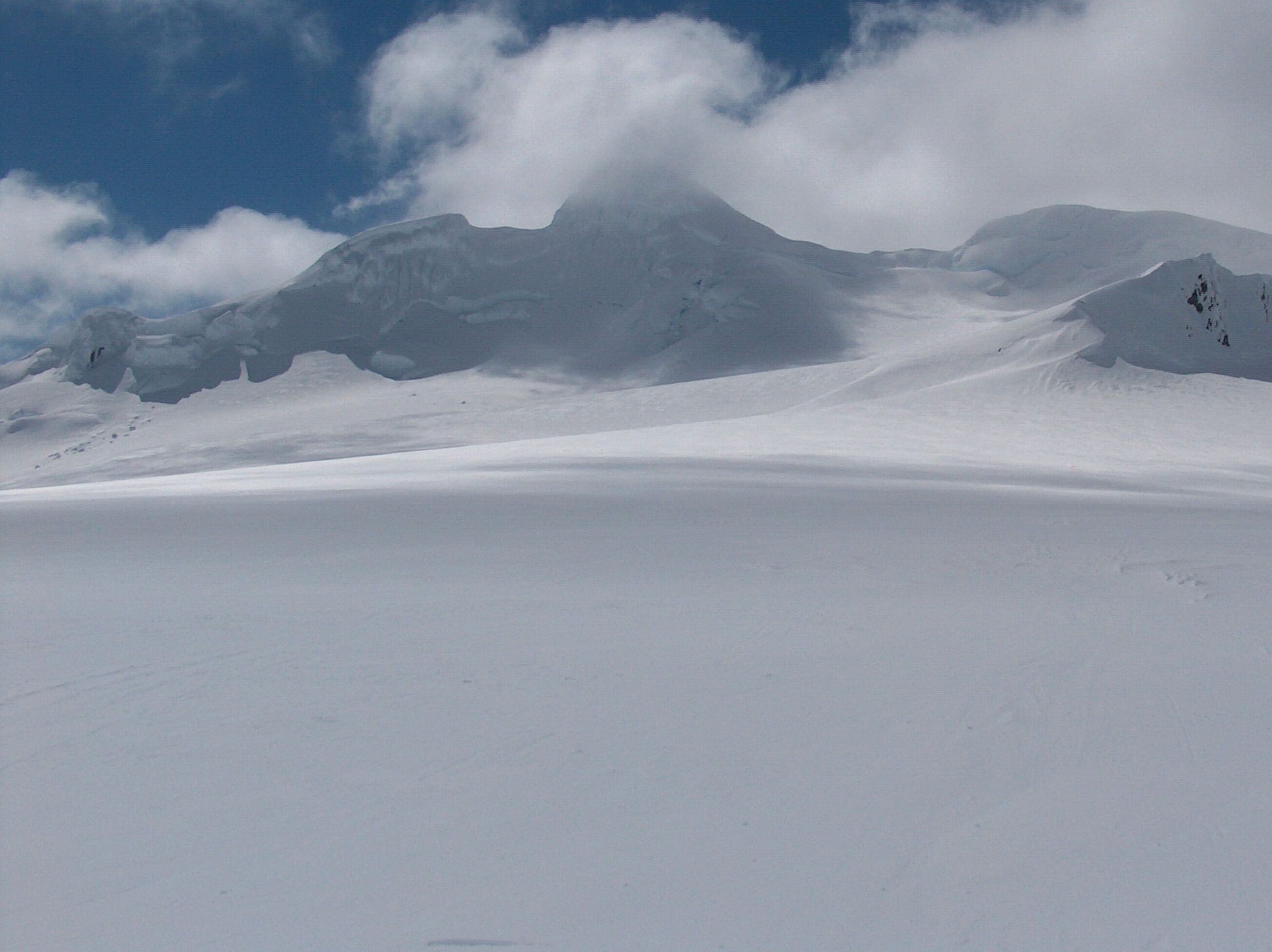|
Contell Glacier
Contell Glacier is long and wide glacier on Hurd Peninsula, Livingston Island in the South Shetland Islands, Antarctica bounded by Atlantic Club Ridge to the northwest, Krum Rock to the north, Balkan Snowfield to the northeast, and Charrúa Ridge and Charrúa Gap to the south. It is crescent-shaped, running northwestwards in its upper course, then between Charrúa Ridge and Krum Rock turning west-southwestwards to flow into South Bay north of Johnsons Dock. The feature was first named on a 1988 Spanish chart as ''Glaciar Contell''. Location The midpoint of the glacier is located at (Detailed Spanish mapping in 1991, and Bulgarian mapping in 1996, 2005 and 2009). See also * List of glaciers in the Antarctic * Glaciology Glaciology (; ) is the scientific study of glaciers, or more generally ice and natural phenomena that involve ice. Glaciology is an interdisciplinary Earth science that integrates geophysics, geology, physical geography, geomorphology, climato ... ... [...More Info...] [...Related Items...] OR: [Wikipedia] [Google] [Baidu] |
Antarctica
Antarctica () is Earth's southernmost and least-populated continent. Situated almost entirely south of the Antarctic Circle and surrounded by the Southern Ocean, it contains the geographic South Pole. Antarctica is the fifth-largest continent, being about 40% larger than Europe, and has an area of . Most of Antarctica is covered by the Antarctic ice sheet, with an average thickness of . Antarctica is, on average, the coldest, driest, and windiest of the continents, and it has the highest average elevation. It is mainly a polar desert, with annual precipitation of over along the coast and far less inland. About 70% of the world's freshwater reserves are frozen in Antarctica, which, if melted, would raise global sea levels by almost . Antarctica holds the record for the lowest measured temperature on Earth, . The coastal regions can reach temperatures over in summer. Native species of animals include mites, nematodes, penguins, seals and tardigrades. Where vegetation o ... [...More Info...] [...Related Items...] OR: [Wikipedia] [Google] [Baidu] |
Charrúa Ridge
Charrúa Ridge is an ice-free rocky ridge rising to along the northeast coast of Johnsons Dock in Hurd Peninsula, Livingston Island, in the South Shetland Islands, Antarctica. It is narrow and precipitous, extending in a west-northwest to east-southeast direction, with triple heights of elevation 322, 333 and 332 m respectively, and linked to Castillo Nunatak by Charrúa Gap. It surmounts Contell Glacier to the north, South Bay to the west, Johnsons Dock to the southwest and Johnsons Glacier to the south. It forms a prominent landmark in the area between the Spanish Antarctic base Juan Carlos I and the Bulgaria Bulgaria (; bg, България, Bǎlgariya), officially the Republic of Bulgaria,, ) is a country in Southeast Europe. It is situated on the eastern flank of the Balkans, and is bordered by Romania to the north, Serbia and North Macedon ...n Antarctic base St. Kliment Ohridski Base, St. Kliment Ohridski. The feature is named after the ''Charrúa'', one of t ... [...More Info...] [...Related Items...] OR: [Wikipedia] [Google] [Baidu] |
Glaciology
Glaciology (; ) is the scientific study of glaciers, or more generally ice and natural phenomena that involve ice. Glaciology is an interdisciplinary Earth science that integrates geophysics, geology, physical geography, geomorphology, climatology, meteorology, hydrology, biology, and ecology. The impact of glaciers on people includes the fields of human geography and anthropology. The discoveries of water ice on the Moon, Mars, Europa and Pluto add an extraterrestrial component to the field, which is referred to as "astroglaciology". Overview A glacier is an extended mass of ice formed from snow falling and accumulating over a long period of time; glaciers move very slowly, either descending from high mountains, as in valley glaciers, or moving outward from centers of accumulation, as in continental glaciers. Areas of study within glaciology include glacial history and the reconstruction of past glaciation. A glaciologist is a person who studies glaciers. A glacial geologist ... [...More Info...] [...Related Items...] OR: [Wikipedia] [Google] [Baidu] |
List Of Glaciers In The Antarctic
There are many glaciers in the Antarctic. This set of lists does not include ice sheets, ice caps or ice fields, such as the Antarctic ice sheet, but includes glacial features that are defined by their flow, rather than general bodies of ice. The lists include outlet glaciers, valley glaciers, cirque glaciers, tidewater glaciers and ice streams. Ice streams are a type of glacier and many of them have "glacier" in their name, e.g. Pine Island Glacier. Ice shelves are listed separately in the List of Antarctic ice shelves. For the purposes of these lists, the Antarctic is defined as any latitude further south than 60° (the continental limit according to the Antarctic Treaty System). List by letters * List of glaciers in the Antarctic: A–H * List of glaciers in the Antarctic: I–Z See also * List of Antarctic and subantarctic islands * List of Antarctic ice rises * List of Antarctic ice shelves * List of Antarctic ice streams * List of glaciers * List of subantar ... [...More Info...] [...Related Items...] OR: [Wikipedia] [Google] [Baidu] |
Johnsons Dock
Johnsons Dock is a sheltered 500 m wide cove indenting for 900 m the northwest coast of Hurd Peninsula on Livingston Island in the South Shetland Islands, Antarctica. It is part of South Bay entered north of Ballester Point. Surmounted by Charrúa Ridge on the northeast. The cove was frequented by early 19th century sealers. The feature is probably named after Captain Thomas Johnson, Master of the British brig ''Mellona'' or Captain Robert Johnson, Master of the American sealing ship ''Jane Maria'' and of the schooner ''Wasp'', who visited the South Shetland Islands in the first seasons after their discovery. Location The cove's midpoint is located at which is 1.9 km south-southeast of Hespérides Point Hespérides Point ( es, Punta Hespérides) is a rocky point of land projecting into South Bay north-northwest of Johnsons Dock, Livingston Island in the South Shetland Islands, Antarctica and forming the southwest side of the entrance to Emona .... British early ... [...More Info...] [...Related Items...] OR: [Wikipedia] [Google] [Baidu] |
South Bay, Livingston Island
South Bay () is a wide bay indenting for the south coast of Livingston Island in the South Shetland Islands, Antarctica. The bay is lying northwest of False Bay and east of Walker Bay, and is entered between Hannah Point and Miers Bluff. The glaciers Kamchiya, Pimpirev, Perunika, Contell, Johnsons and Hurd Ice Cap feed the bay. South Bay was known to both American and British sealers as early as 1820, and the name has been well established in international usage for over 100 years. Maps Chart of South Shetland including Coronation Island, &c.from the exploration of the sloop Dove in the years 1821 and 1822 by George Powell Commander of the same. Scale ca. 1:200000. London: Laurie, 1822. South Shetland Islands.Scale 1:200000 topographic map No. 5657. DOS 610 – W 62 60. Tolworth, UK, 1968. * Islas Livingston y Decepción. Mapa topográfico a escala 1:100000. Madrid: Servicio Geográfico del Ejército, 1991. * L.L. Ivanov et al. Antarctica: Livingston Island and Greenwic ... [...More Info...] [...Related Items...] OR: [Wikipedia] [Google] [Baidu] |
Charrúa Gap
Charrúa Gap (Sedlovina Charrúa \se-dlo-vi-'na cha-'ru-a\) is a flat ice-covered saddle extending in east-west direction between Castillo Nunatak and Charrúa Ridge on Hurd Peninsula, eastern Livingston Island at an elevation of . The gap separates the glacial catchments of Balkan Snowfield and Contell Glacier to the north and Huntress Glacier and Johnsons Glacier. The glacial catchments of the last two glaciers are separated by a nameless ice-covered saddle extending between the midpoint of Charrúa Gap to the north and Napier Peak () to the south. A small nameless lake is ice-dammed in a deep hollow to the east of Charrúa Ridge. The feature takes its name from the adjacent Charrúa Ridge. The Charrúa Gap is part of several overland routes, for example between the Bulgarian base and the Spanish base, from the Bulgarian base to the southern region of Hurd Peninsula and from the Spanish base to Burdick Ridge, Friesland Ridge and Bowles Ridge areas. The gap was mapped ... [...More Info...] [...Related Items...] OR: [Wikipedia] [Google] [Baidu] |
Balkan Snowfield
Balkan Snowfield (Plato Balkan \'pla-to bal-'kan\) is an ice-covered plateau of elevation ranging from in eastern Livingston Island in the South Shetland Islands, Antarctica, situated south of lower Perunika Glacier, northwest of Huntress Glacier and north of Contell Glacier. It is long in southwest-northeast direction and , and bounded by Burdick Ridge to the east, Willan Nunatak and Castillo Nunatak to the southeast, and Krum Rock to the southwest. The feature slopes gently northwestwards with its foot bounded by the hills along Bulgarian Beach. It is named after the Balkans. Location The midpoint of the snowfield is located at . Detailed mapping by the Spanish Servicio Geográfico del Ejército in 1991, and Bulgarian mapping in 1996, 2004 and 2009. Maps Isla Livingston: Península Hurd.Mapa topográfico de escala 1:25000. Madrid: Servicio Geográfico del Ejército, 1991. (Map reproduced on p. 16 of the linked work) * L.L. Ivanov. Livingston Island: Central-Eastern Region ... [...More Info...] [...Related Items...] OR: [Wikipedia] [Google] [Baidu] |
Livingston Island
Livingston Island (Russian name ''Smolensk'', ) is an Antarctic island in the Southern Ocean, part of the South Shetlands Archipelago, a group of Antarctic islands north of the Antarctic Peninsula. It was the first land discovered south of 60° south latitude in 1819, a historic event that marked the end of a centuries-long pursuit of the mythical ''Terra Australis Incognita'' and the beginning of the exploration and utilization of real Antarctica. The name Livingston, although of unknown derivation, has been well established in international usage since the early 1820s. Geography Livingston Island is situated in West Antarctica northwest of Cape Roquemaurel on the Antarctic mainland, south-southeast of Cape Horn in South America, southeast of the Diego Ramírez Islands (the southernmost land of South America), due south of the Falkland Islands, southwest of South Georgia Islands, and from the South Pole.L. IvanovGeneral Geography and History of Livingston Island.In ... [...More Info...] [...Related Items...] OR: [Wikipedia] [Google] [Baidu] |
Krum Rock
Krum Rock ( bg, Krumov Kamak \'kru-mov 'ka-m&k\) is a small nunatak rising to 208 metres on the southwest edge of Balkan Snowfield just north of Contell Glacier on Hurd Peninsula in eastern Livingston Island, one of the South Shetland Islands in Western Antarctica. The rock projects slightly above the ice sheet with some 3,000 square metres of rocky ground exposed on its northern slope in summer. Because of its location rather than prominence, it is a particularly important landmark in the course of field work carried out in the area. Location The nunatak is located at which is 1 km east of Atlantic Club Ridge, 1.2 km southeast of Sinemorets Hill, 2.8 km west by north of Castillo Nunatak, and 1 km north by east of the highest point of Charrúa Ridge. Krum Rock is named for Krum Velchev, meteorologist at St. Kliment Ohridski Base for several seasons since 1993. The name form ''Krumov Kamak'' was well established in use at the time of approval. Maps Isla ... [...More Info...] [...Related Items...] OR: [Wikipedia] [Google] [Baidu] |









